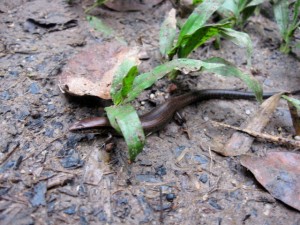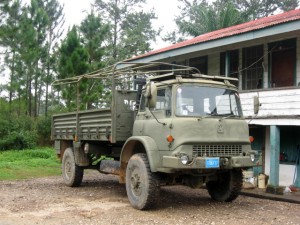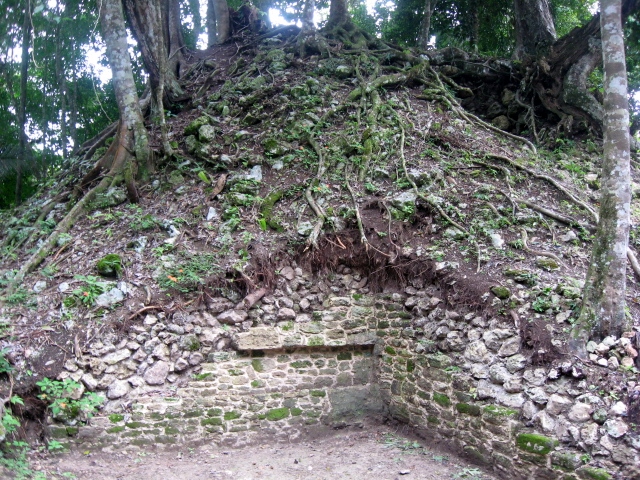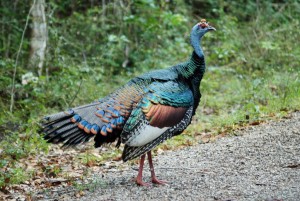
Ruta Maya – Part Ten
This is Part Ten of a series of articles about the Aztec and Mayan pyramids and ruins in Central America. Updated Sep 2022.
Caracol is a large Mayan archaeological site located in what is now the country of Belize. It was once one of the most important cities in the Mayan world. The city covered an area of approximately 200 square kilometres – much larger and almost double the population (more than 100,000) than the present-day Belize City, now the largest city in Belize. The Mayans occupied the city from about 1200 B.C. to 1050 A.D. There are many different theories about why Caracol and all the other Mayan cities were abandoned. It was probably a combination of things, including a greater population than the area could support, lack of food, wars, and other events.
Getting to Caracol
Getting to Caracol is slightly difficult. It is very remote. This archaeological site is about 40 kilometres into the jungle from San Ignacio, Belize, over a horrible, bumpy, muddy, pothole-filled road, which takes about 2.5 hours. There are no towns, buildings or other types of settlements in the area.
Also, the area has, in the past, been the target of gangs of bandits from across the border in Guatemala. The way to get to Caracol is to go with a tour group. There are many in San Ignacio. Just ask your hotel staff. All the tours are the same, so the only thing you need to compare is the price. About halfway there, the tour vehicles will arrive at a small army camp. From here, you will have a military escort to Caracol. Even if you have your own vehicle, it is not recommended to go to Caracol on your own.
Update 2022 The last act of violence by bandits on the way to Caracol was in 2014. So it is now safe to travel on your own, but the military checkpoint and escort is still in use. Despite that, we still recommend going to Caracol with a tour group and not in your own vehicle. Once you get to Caracol, you can wander around wherever you wish until the tour departs. Bandits aside, going to Caracol with your own vehicle is risky. If you should have mechanical problems or get stuck, it would be a long time before you got any help. The road goes nowhere except to Caracol and back. If the tours have left before you, you could be stuck there overnight.
The long and winding Road
The word Caracol means snail in Spanish. Most snails have a spiral pattern on their shell. However, the name may also have derived from the winding road that leads to the city.
Modern Discovery
Like other Mayan cities, Caracol was abandoned more than 500 years ago. In the interim, the structures became overgrown by the jungle. Loggers searching for mahogany trees discovered it again in 1937.
The Sky Palace
The main structure is a vast pyramid called Caana, the Sky Palace. Not much taller than other pyramids I have seen but a lot wider at the base. It has only been excavated since 2001. It took a crew of 500 workers more than four years to clear the front of the pyramid and the plaza of plants and dirt. The other three sides of the pyramid remain inaccessible in the jungle. There are very few Mayan structures in Mexico that have not been excavated. If this were in Mexico, all the dirt and plants would have been removed, and you could walk around the building and view all four sides. Clearing away a century of dirt and plants is a huge and costly job. Belize does not have the money for it.
This 1000-year-old pyramid is still the tallest structure in Belize today.
The above photo shows the pyramid on the opposite side of the plaza from Caana Below are some of the decorations on the pyramid.
War with Tikal
Tikal is another large Mayan city located about 42 km west in present-day Guatemala (a post about Tikal will be included later in this series of stories about the Ruta Maya). In the year 556, Tikal declared war on Caracol and Caracol was defeated. However, in 562, the situation was reversed when Caracol defeated Tikal and became the dominant city in the area. Several other wars between Tikal and Caracol followed, and dominance was continually changing between the two city-states.
Trees
While at Caracol, take a moment to look at the surrounding forest. The vast, ancient mahogany and ceiba trees are magnificent. Also, take note of newer trees that are growing on top of the ruins.
Unexcavated Ruins

Most of the structures at Caracol are still not excavated. They look like giant mounds of dirt with trees and other plants growing on them.
Birds
Keep your eye out for rare birds while travelling to and from Caracol.
We found a small group of Ocellated Turkeys. These colourful jungle turkeys are found only in Belize, Petan (the northern state of Guatemala) and southern Yucatan. They are very rare except in a few isolated spots. They have almost been wiped out in Mexico from hunting. The only place they are common in Mexico is at one of the Mayan ruins called Calakmul, near Guatemala’s northern border. We will go there when we return to Mexico to continue the tour of the Ruta Maya. This multi-coloured turkey has iridescent green and blue and several other coloured feathers. I was very happy to see this rare bird.
A little further down the road, we stopped to see a magnificent White Hawk. This all-white hawk is a real beauty and another great find. Unfortunately, we only saw it for a few seconds before it flew away.
Other Critters


We also saw some interesting bugs, plants, and a swarm of army ants. They had found a big spider and were chasing it. The spider would run a little and then stop, and the ants would catch up. This happened several times. Finally, they got the spider surrounded, and he was a goner. I had always thought of spiders as eating flies and ants and other insects, and it was interesting to see the tables turned on this one – a spider being attacked and eaten by ants. I also found a skink, which looks like a snake with tiny legs.
Summary
The ruins were very interesting, but it was not as great as I had expected. Chichen Itza and Uxmal in Yucatan are still the best Mayan sites that I have seen so far. Still, several stops to make on the Ruta Maya, including the magnificent city of Tikal in Guatemala.
Click here for a list of all the sites on the Ruta Maya,






